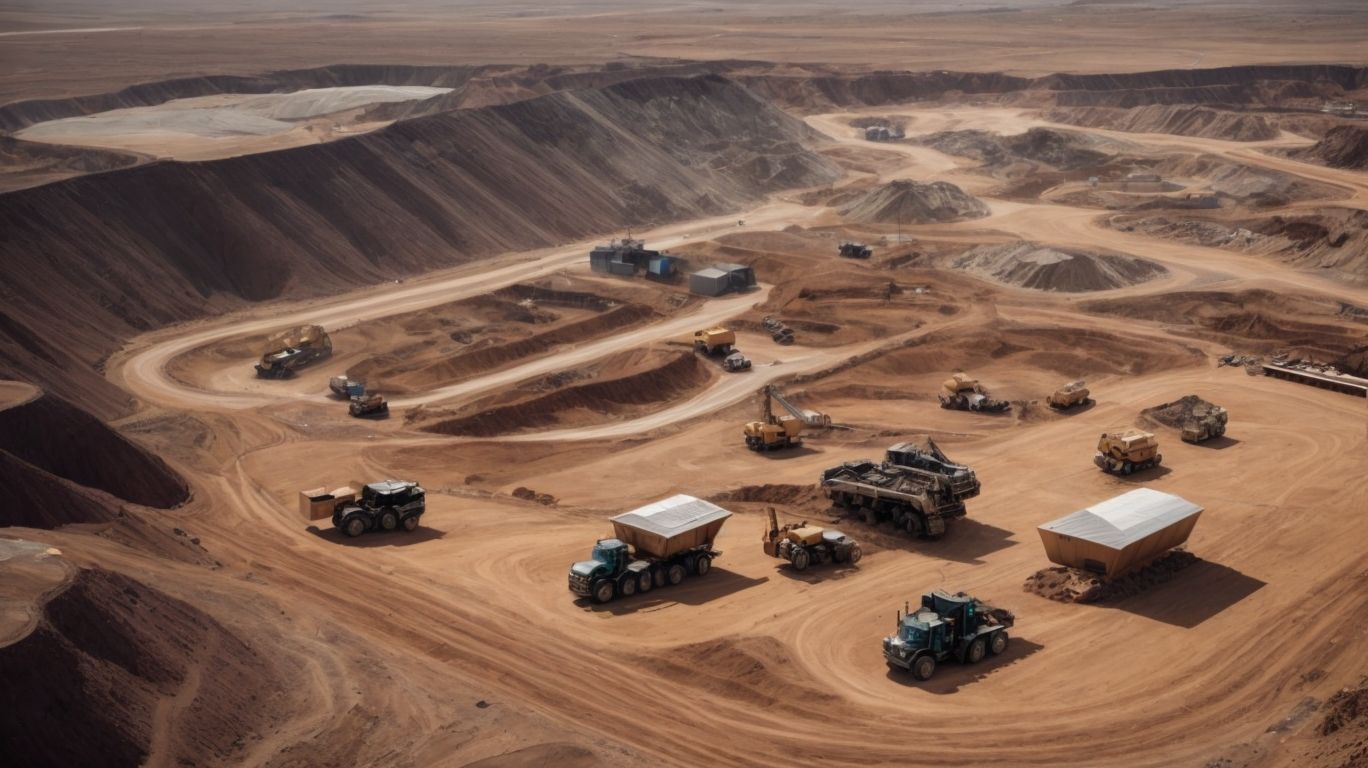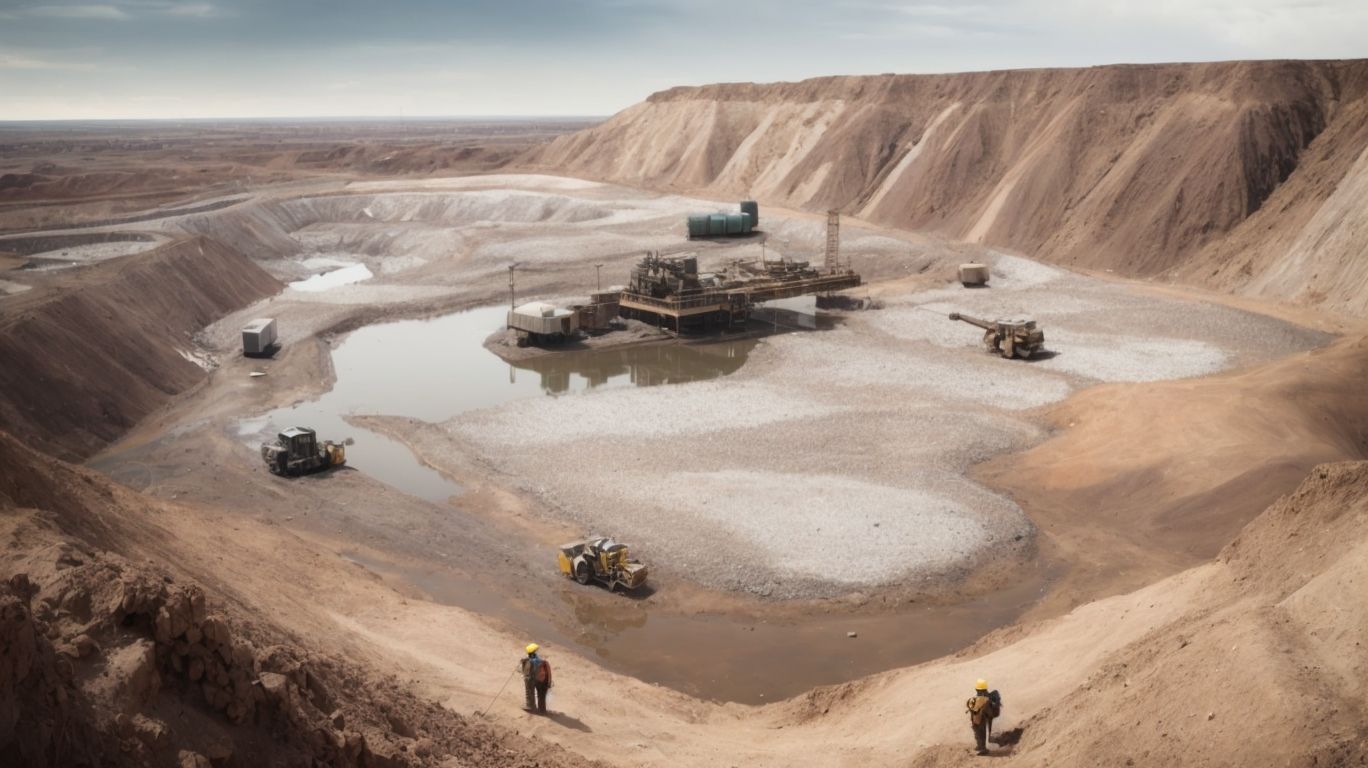
The Environmental Impact of Gemstone Mining: Challenges and Solutions
Gemstones are often associated with beauty and luxury, but the process of mining these precious stones can have a significant impact on the environment.
Environmental challenges such as deforestation and water pollution are prevalent in gemstone mining.
In this article, we will explore the challenges faced by the industry and potential solutions to reduce its environmental impact.
We will discuss how consumers can make a positive impact by choosing ethically sourced gemstones and supporting companies with sustainable mining practices.
Let’s explore the world of gemstone mining and its environmental implications.
What is Gemstone Mining?
Gemstone mining involves the extraction of precious stones from the earth, encompassing a range of techniques and processes to unearth these valuable minerals.
Historically, gemstone mining dates back centuries to ancient civilizations that prized these stones for their beauty and symbolism. Methods of extracting gemstones have evolved over time, from traditional hand tools to more advanced machinery, impacting both the environment and surrounding communities. Techniques such as open-pit mining and underground mining are commonly used in gemstone extraction, with sustainability becoming a growing concern in the industry due to the environmental impact of mining operations.
What are the Environmental Challenges of Gemstone Mining?
Gemstone mining poses significant environmental challenges, including pollution, deforestation, water contamination, and biodiversity loss, contributing to the broader issues of environmental degradation and climate change.
The process of gemstone mining involves the extensive use of heavy machinery, which emits harmful pollutants such as sulfur dioxide and nitrogen oxide into the atmosphere, leading to air pollution. The clearing of large swathes of land for mining operations results in the destruction of forests, impacting wildlife habitats and accelerating deforestation rates. The use of chemicals like cyanide and mercury in the mining process contaminates nearby water bodies, threatening water quality and aquatic ecosystems. The loss of diverse plant and animal species due to habitat destruction further exacerbates the issue of biodiversity loss in these mining areas.
Deforestation
Deforestation resulting from gemstone mining operations has severe environmental consequences, leading to land degradation, habitat destruction, and the loss of crucial ecosystems.
This destruction of natural habitats due to deforestation not only affects the flora and fauna in the area but also disrupts the intricate balance of the ecosystem as a whole. As trees are cut down to make way for mining activities, countless species lose their homes and food sources, ultimately leading to a significant decline in biodiversity. These key ecosystems play a vital role in supporting various forms of life, and their preservation is essential for maintaining ecological harmony and safeguarding our planet’s rich array of life forms.
Soil Erosion and Degradation
Soil erosion and degradation resulting from gemstone mining activities can lead to land degradation, compromising ecosystem preservation efforts and disrupting the natural balance of the environment.
This degradation of soil quality can have far-reaching consequences on the surrounding ecosystem, impacting the stability of plant and animal species. The loss of fertile soil through erosion not only affects the immediate mining site but also spreads to adjacent areas, leading to a domino effect of habitat destruction.
Preserving natural habitats is crucial for safeguarding biodiversity and ensuring the long-term sustainability of ecosystems, making it imperative to address the environmental challenges posed by gemstone mining practices.
Water Pollution
Water pollution from gemstone mining operations poses a significant threat to aquatic ecosystems, emphasizing the importance of effective waste management and pollution control measures.
Such pollution primarily stems from the discharge of toxic chemicals, heavy metals, and sediments into water bodies, endangering the health and biodiversity of aquatic life. The contamination can disrupt the food chain, harm fish populations, and degrade overall water quality. The lack of proper waste management can lead to long-term ecological damage, affecting not only aquatic organisms but also human communities reliant on these ecosystems for sustenance and livelihoods. Therefore, it is essential for mining companies to adopt sustainable practices and adhere to stringent environmental regulations to mitigate these harmful effects.
Air Pollution
Air pollution generated by gemstone mining activities contributes to environmental degradation, emphasizing the need for eco-friendly mining practices to reduce the industry’s carbon footprint.
- The sources of these emissions in gemstone mining operations vary, including dust from excavation, diesel-powered machinery, and the use of explosives.
- The release of particulate matter, nitrogen oxides, and sulfur dioxide into the atmosphere not only poses health risks to local communities but also contributes to global climate change.
The environmental consequences of air pollution from gemstone mining can extend far beyond the immediate area, impacting ecosystems, water quality, and biodiversity. Consequently, adopting sustainable mining practices such as utilizing renewable energy sources, optimizing transportation logistics, and implementing efficient waste management techniques is crucial in mitigating these harmful effects on the environment.
Loss of Biodiversity
The loss of biodiversity resulting from gemstone mining activities poses a threat to conservation efforts and emphasizes the need for proactive habitat preservation measures to safeguard fragile ecosystems.
Such activities may lead to the destruction of natural habitats, endangering numerous plant and animal species that rely on these ecosystems for survival. Conservation initiatives play a crucial role in mitigating the impact of biodiversity loss in gemstone mining, aiming to balance the economic benefits of mining with the long-term ecological health of the environment. Sustainable practices, such as reclamation of mined areas and responsible extraction techniques, are essential in ensuring that species diversity is maintained amidst the extraction of precious gemstones.
What are the Solutions to Reduce the Environmental Impact of Gemstone Mining?
To address the environmental impact of gemstone mining, implementing sustainable practices, promoting conservation efforts, and fostering responsible mining practices are crucial steps towards sustainability and environmental stewardship.
- By incorporating sustainable practices in gemstone mining operations, such as reducing water usage, reusing materials, and implementing renewable energy sources, the industry can significantly decrease its carbon footprint and ecological impact.
- Adopting conservation strategies, like reforestation programs and habitat rehabilitation, can help restore damaged areas and preserve biodiversity.
- Responsible mining approaches, including ethical labor practices and community engagement, not only benefit the environment but also support local economies and ensure the well-being of workers and communities affected by mining activities.
Implementing Sustainable Mining Practices
Implementing sustainable mining practices in the gemstone industry is essential to minimize the environmental impact, ensure responsible resource management, and comply with environmental regulations.
By incorporating sustainable mining methods, companies can reduce their carbon footprint, preserve ecosystems, and protect biodiversity. These practices involve the efficient use of water resources, proper waste management, and reclamation of mining sites post-extraction. Regulations such as the Clean Water Act and the Endangered Species Act play a crucial role in holding mining operations accountable for their environmental impact. Responsible mining operations prioritize worker safety, community engagement, and ethical sourcing practices, contributing positively to both the environment and society as a whole.
Using Alternative Mining Methods
Exploring alternative mining methods for gemstone extraction can offer sustainable solutions to maintain ecological balance, reduce environmental degradation, and promote long-term environmental sustainability.
These innovative techniques, such as artisanal mining and small-scale operations, prioritize minimizing land disturbance and water pollution. By focusing on safety measures and responsible mining practices, stakeholders in the gemstone industry can work towards preserving the natural landscape and biodiversity of mining areas. Incorporating technologies like drones and remote sensing can enhance efficiency while minimizing the ecological footprint. Implementing these eco-conscious approaches not only benefits the environment but also supports local communities by providing opportunities for sustainable economic development.
Reclaiming Mined Land
Reclaiming mined land after gemstone extraction is vital for environmental restoration, habitat rehabilitation, and fostering a culture of responsible mining that prioritizes environmental conservation.
It is crucial to understand that the process of reclaiming mined land goes beyond just filling in holes or planting a few trees; it entails a comprehensive restoration of the entire ecosystem that was disrupted during mining activities. By implementing reclamation efforts and restoration initiatives, not only are we able to restore the land to its former state, but we also create valuable habitats for wildlife and contribute to the overall health of the environment. Environmental restoration practices play a pivotal role in ensuring sustainable mining practices and mitigating the long-term impacts of gemstone extraction on the surrounding landscapes.
Investing in Research and Development of Greener Mining Technologies
Investing in research and development of greener mining technologies for the gemstone industry can lead to advancements in renewable energy use, enhanced environmental management practices, and reduced ecological footprints.
- These innovative technologies can encompass a wide range of solutions, such as integrating solar and wind power to replace traditional fossil fuel-dependent operations, thereby reducing greenhouse gas emissions.
- Implementing water recycling systems and sustainable land reclamation methods can further minimize the industry’s impact on the environment.
- By prioritizing sustainability and efficiency, mining companies can not only meet regulatory standards but also enhance their long-term viability and reduce operational costs in the evolving global market.
Encouraging Ethical and Responsible Sourcing of Gemstones
Encouraging ethical and responsible sourcing practices in the gemstone supply chain is paramount for promoting environmental responsibility, corporate accountability, and sustainable resource management.
By prioritizing transparency in the mining process and supporting fair labor practices, the industry can ensure that gemstones are sourced in a manner that respects both the environment and local communities. Implementing certification programs and engaging with stakeholders to uphold ethical standards further strengthens the commitment to sustainable practices. Consumers play a crucial role in driving demand for ethically sourced gemstones, creating a ripple effect that encourages more companies to adopt responsible sourcing initiatives and contribute to a more sustainable future for the industry.
How Can Consumers Make a Positive Impact on the Environment through Gemstone Purchases?
Consumers can contribute to environmental conservation through their gemstone purchases by opting for ethically sourced stones, supporting sustainable mining practices, and promoting responsible consumption habits.
By choosing gemstones that are sourced in an ethical manner, individuals can make a positive impact on the environment and support fair labor practices in the industry. It is essential for consumers to be aware of the origins of the gemstones they purchase, ensuring that they come from mines that prioritize sustainability and responsible mining practices.
Making informed choices regarding gemstone purchases can lead to a more sustainable and ethical supply chain for the precious stones, ultimately encouraging the adoption of environmentally-friendly practices within the gemstone industry.
Choosing Ethically Sourced Gemstones
Choosing ethically sourced gemstones empowers consumers to support community engagement initiatives, ethical practices, and responsible sourcing behaviors that prioritize environmental and social well-being.
By opting for ethically sourced gemstones, individuals can contribute to uplifting local communities where these gems are mined. This commitment to ethical standards not only ensures fair wages for workers but also promotes sustainable mining practices. Consumers who prioritize responsible sourcing play a crucial role in shaping the industry towards greater transparency and accountability. Supporting brands that prioritize ethical practices creates a ripple effect, encouraging other companies to follow suit in adopting ethical standards throughout their supply chain.
Supporting Companies with Sustainable Mining Practices
Supporting companies that uphold sustainable mining practices through gemstone purchases fosters community empowerment, promotes sustainable development, and advocates for environmentally conscious business operations.
By choosing to invest in ethically sourced gemstones, consumers can help drive positive change in mining communities, ensuring fair wages and safe working conditions for miners. Companies that prioritize sustainability often contribute to local economic growth and social well-being, aligning with the United Nations Sustainable Development Goals. Embracing environmentally friendly practices not only benefits the planet but also builds trust and credibility with eco-conscious customers, further driving the demand for responsibly sourced gemstones.
Educating Others about the Environmental Impact of Gemstone Mining
Raising awareness about the environmental impact of gemstone mining is pivotal in promoting environmental conservation, fostering eco-conscious behaviors, and driving collective efforts towards sustainability.
By educating individuals about how gemstone mining can lead to deforestation, soil erosion, water pollution, and habitat destruction, we can empower them to make informed decisions that align with sustainable practices.
It is crucial to advocate for the implementation of responsible mining techniques and support initiatives that prioritize ethical sourcing and fair labor practices within the gemstone industry.
Through environmental education, we can inspire people to take action, reduce their ecological footprint, and contribute to the protection of our planet’s natural resources for future generations.




No Comments